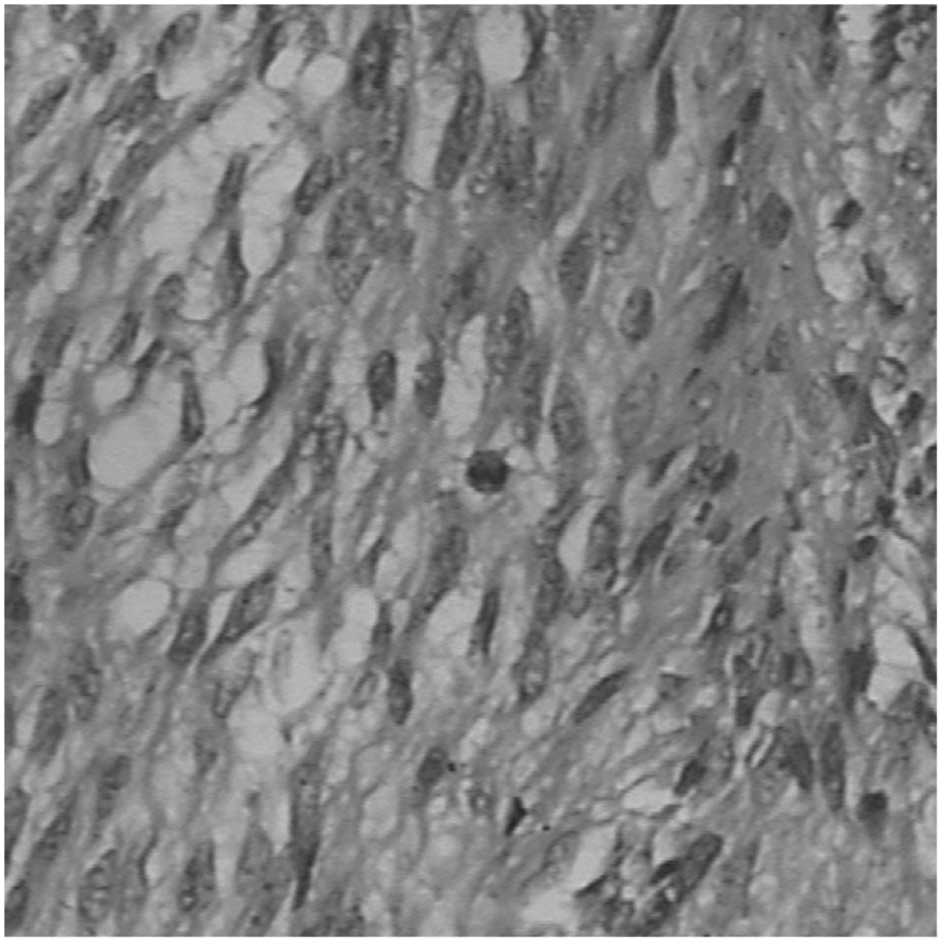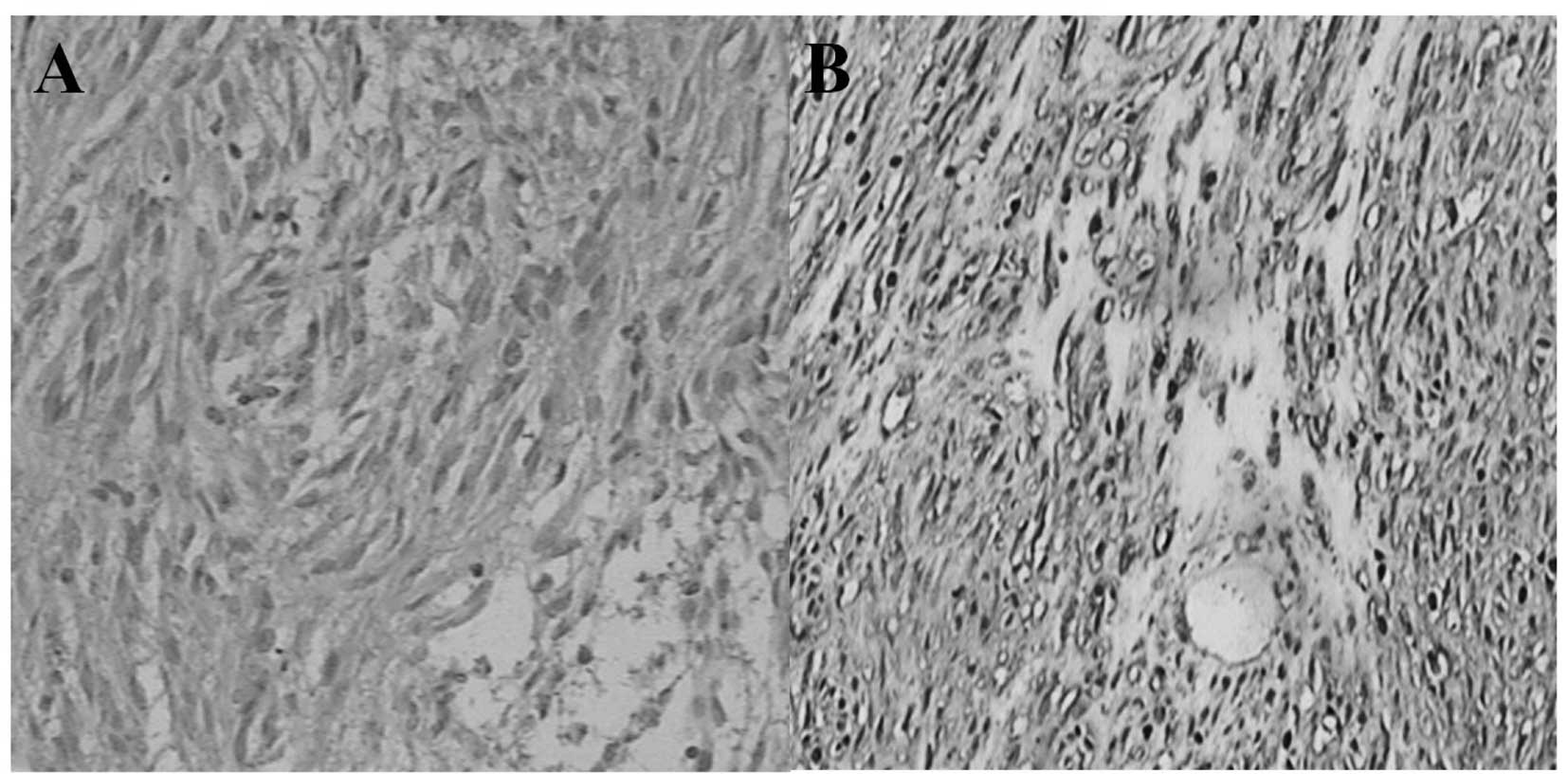The expression of KIT receptor dimers in gastrointestinal stromal tumors independent of c-kit mutation and SCF expression is associated with high-risk stratification
- Authors:
- Published online on: July 11, 2012 https://doi.org/10.3892/ol.2012.797
- Pages: 805-811
Metrics: Total
Views: 0 (Spandidos Publications: | PMC Statistics: )
Total PDF Downloads: 0 (Spandidos Publications: | PMC Statistics: )
Abstract
Although the dimerization of KIT, a receptor tyrosine kinase, plays a major role in a number of tumors, correlations between the clinicopathological parameters and KIT receptor dimers have not been identified. In the current study, a method for the detection of KIT receptor dimer expression was described and correlations between the clinicopathological parameters and KIT receptor dimers were analyzed. A single center cohort study of 49 patients with gastrointestinal stromal tumors (GISTs) was conducted to analyze the expression of KIT receptor dimers by SDS-PAGE, Native-PAGE and modified Native-PAGE. Immunohistochemistry was used to examine the expression of ki-67, c-kit and stem cell factor (SCF). Mutations of the c-kit gene were examined in 48 GISTs according to the polymerase chain reaction (PCR) and direct sequencing methods. Based on the data, a signal for the KIT receptor monomer was obtained by SDS-PAGE. Faint bands were observed on the nitrocellulose membrane by Native‑PAGE, while clear bands were identified for KIT receptor dimers and monomers using modified Native‑PAGE (15 out of 49 cases). The tumor size was larger in KIT receptor dimer-positive cases compared with that in KIT receptor dimer‑negative cases. Analysis of KIT receptor dimer expression levels and risk stratification demonstrated that KIT receptor dimer-positive cases belonged to the higher risk classification. In addition, there was no significant correlation between the existence of KIT receptor dimers and c-kit gene mutations, including SCF expression. In conclusion, this study established a method for the detection of the existence of KIT receptor dimers in tissues and confirmed that KIT receptor dimers were correlated with risk stratification. Data also indicated that ligand-dependent SCF/KIT dimerization is an independent crucial mechanism in GIST cell proliferation and increases the risk of GIST. Therefore, blocking KIT dimerization may prove to be an effective approach for the treatment of GISTs.















